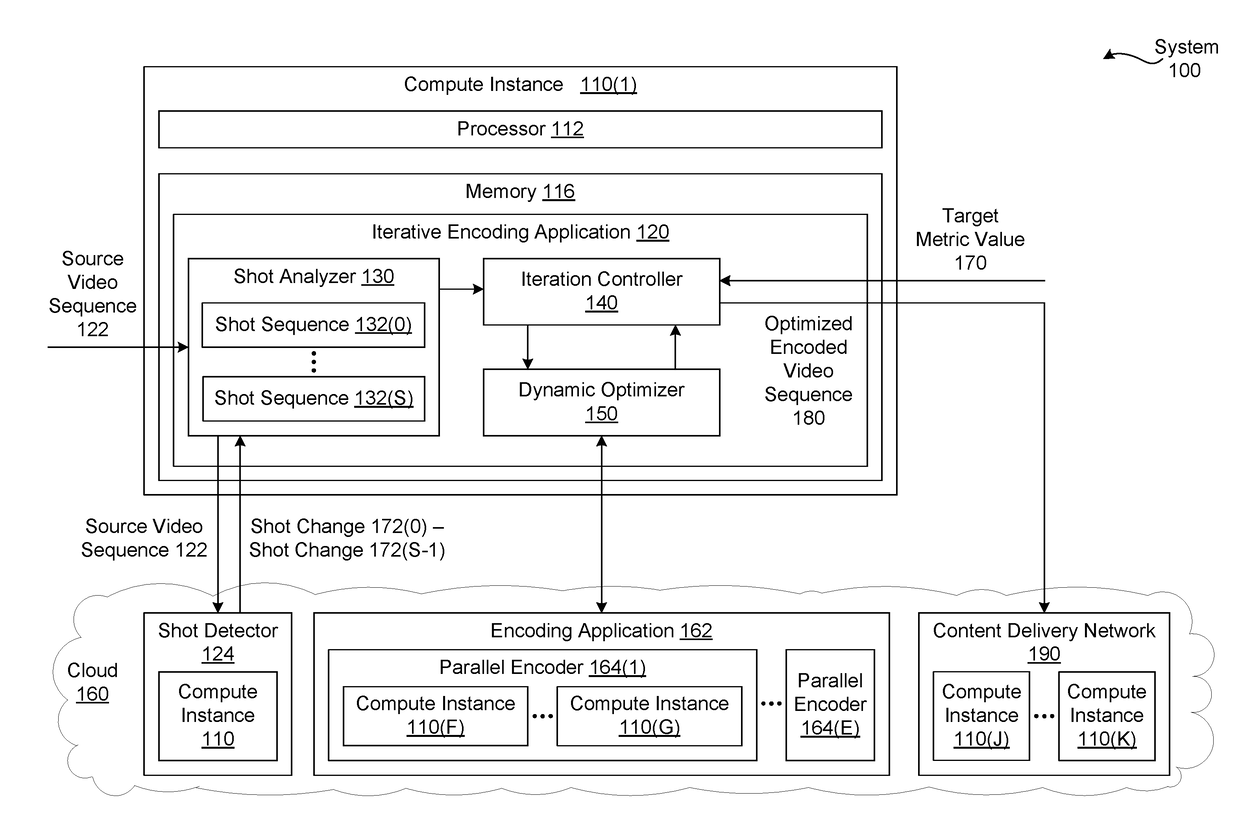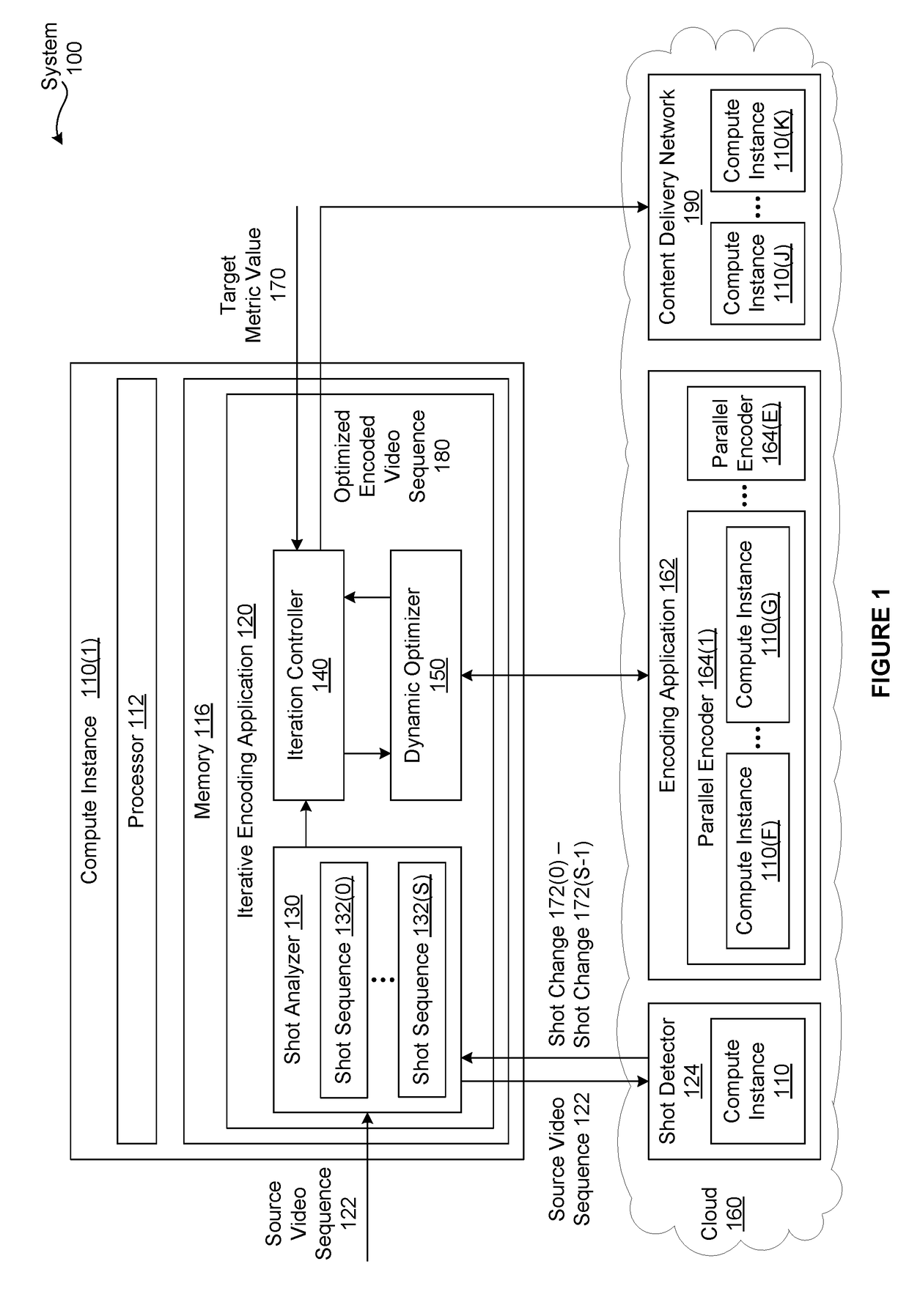Iterative techniques for encoding video content
a technology of video content and encoding techniques, applied in the field of video technology, can solve the problems of consuming computational and storage resources that are not necessary to meetconsuming relatively simple portions of the media title, and needlessly waste computational and storage resources. , to achieve the effect of reducing the bitrate of the target visual quality, reducing the inefficiencies of encoding, and increasing the visual quality of the target bitra
- Summary
- Abstract
- Description
- Claims
- Application Information
AI Technical Summary
Benefits of technology
Problems solved by technology
Method used
Image
Examples
Embodiment Construction
[0002]Embodiments of the present invention relate generally to video technology and, more specifically, to iterative techniques for encoding video content.
Description of the Related Art
[0003]A typical video streaming service provides access to a library of media titles that can be viewed on a range of different endpoint devices. Each endpoint device may connect to the video streaming service under different connection conditions. Some notable connection conditions include, without limitation, bandwidth and latency. In addition, each different endpoint device may include different hardware for outputting the media title to end user(s). For example, a given endpoint device could include a display screen having a particular screen size and a particular screen resolution.
[0004]In many implementations, an endpoint device that connects to a video streaming service executes an endpoint application that determines, for a given media title, an appropriate encoded version of the media title t...
PUM
 Login to View More
Login to View More Abstract
Description
Claims
Application Information
 Login to View More
Login to View More - R&D
- Intellectual Property
- Life Sciences
- Materials
- Tech Scout
- Unparalleled Data Quality
- Higher Quality Content
- 60% Fewer Hallucinations
Browse by: Latest US Patents, China's latest patents, Technical Efficacy Thesaurus, Application Domain, Technology Topic, Popular Technical Reports.
© 2025 PatSnap. All rights reserved.Legal|Privacy policy|Modern Slavery Act Transparency Statement|Sitemap|About US| Contact US: help@patsnap.com



